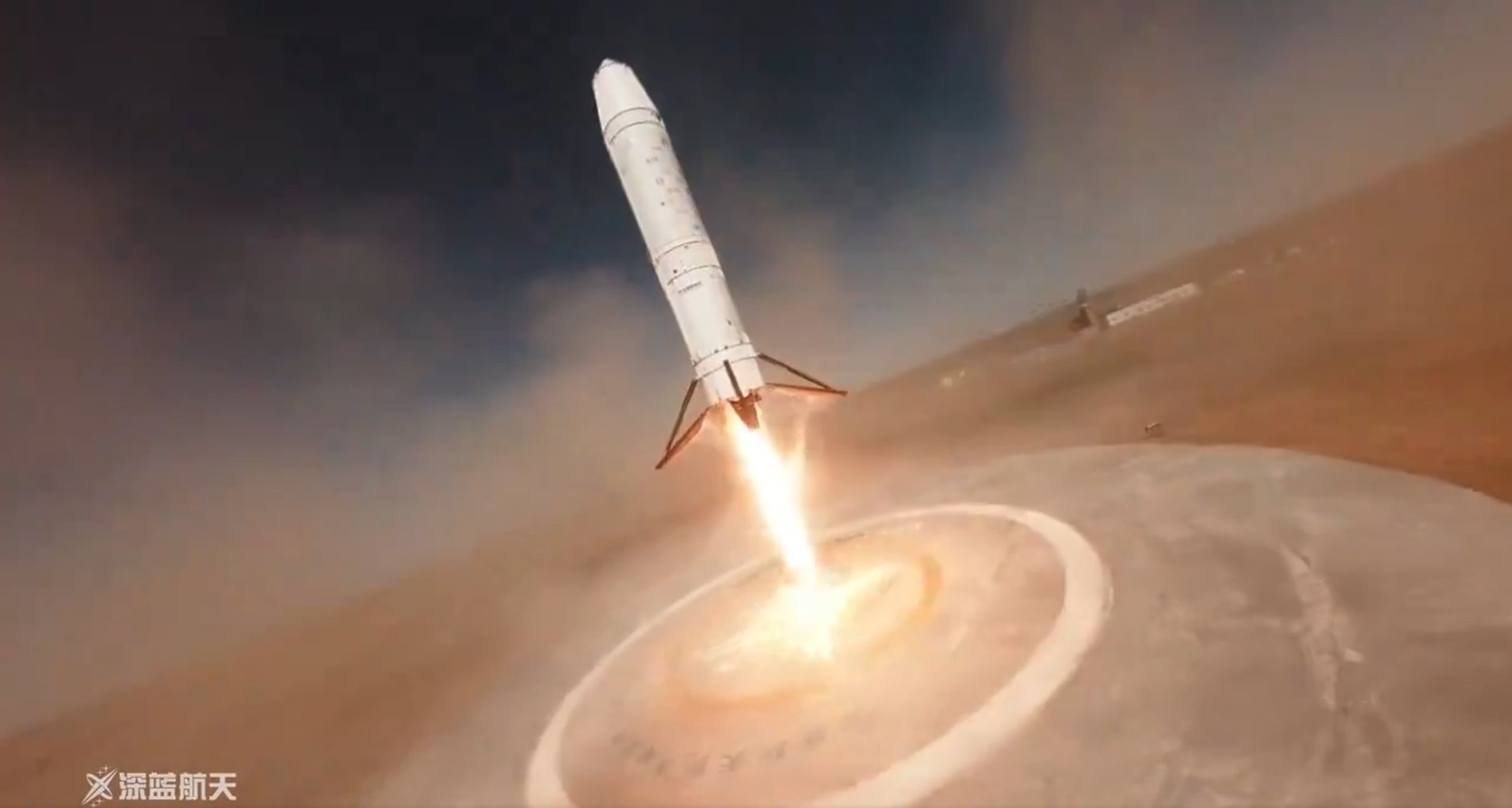A Chinese space startup conducted what it called a "high-altitude" test flight of its Nebula-1 rocket on Sunday, launching the vehicle to an altitude of about 5 km or so before attempting to land it back at the Ejin Banner Spaceport in Inner Mongolia.
The test flight went well for about two and a half minutes before the vehicle experienced a problem just before landing and erupted into a fireball.
This is not the first vertical rocket landing test by a Chinese company, but what sets Deep Blue Aerospace apart from its competitors is its transparency. Within hours the company released a detailed statement about the test flight, its objectives, and a preliminary review of what went wrong.
In addition to this statement, the company released images and video—including that from nearby drones—that included the fiery landing attempt and its aftermath. This is some of the most incredible rocket footage I've ever seen and a welcome new trend toward transparency from Chinese space companies.
The company said it learned a lot from the test, completing 10 of its 11 major objectives. It plans to attempt another high-altitude test flight as early as November.
Deep Blue Aerospace is one of several Chinese aerospace startups—including Linkspace, iSpace, Galactic Energy, and Space Pioneer, among others—seeking to emulate the success that US-based SpaceX has had with vertical take-off and vertical landing of rockets. These experiments mimic the groundbreaking experiments SpaceX performed with its Grasshopper test vehicle more than a decade ago at the company's engine test site in McGregor, Texas.
Deep Blue's Nebula-1 rocket has a diameter of 3.35 meters (11 feet) which is slightly smaller than SpaceX's Falcon 9 rocket (12 feet in diameter). It will be powered by kerosene-liquid oxygen fueled engines, similar to the Falcon 9. Given the setback this weekend, an orbital test flight of Nebula-1 is unlikely to occur before sometime in 2025.
Whereas SpaceX conducted its vertical landing tests after the Falcon 9 had begun launching customers into orbit, Deep Blue Aerospace is testing prior to orbital launches in an attempt to begin landing its first stages from the very beginning. Given what we've seen so far, it should be fun to watch.



3175x175(CURRENT).thumb.jpg.b05acc060982b36f5891ba728e6d953c.jpg)


Recommended Comments
There are no comments to display.
Join the conversation
You can post now and register later. If you have an account, sign in now to post with your account.
Note: Your post will require moderator approval before it will be visible.